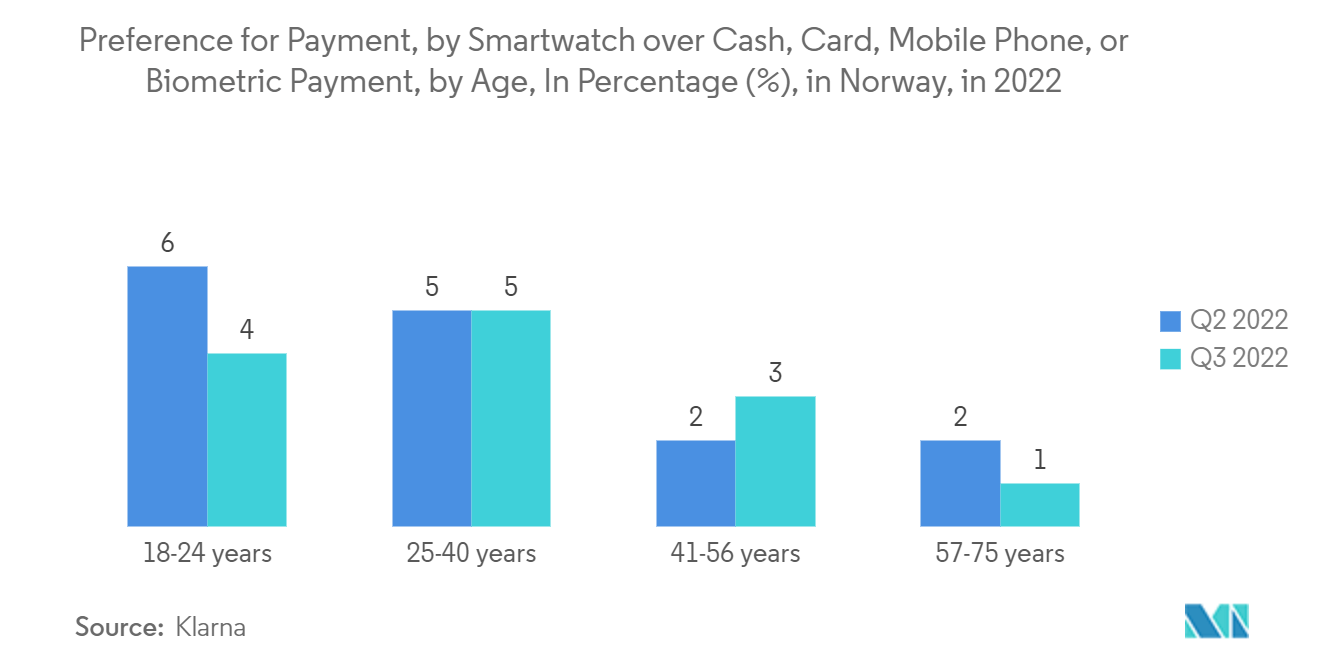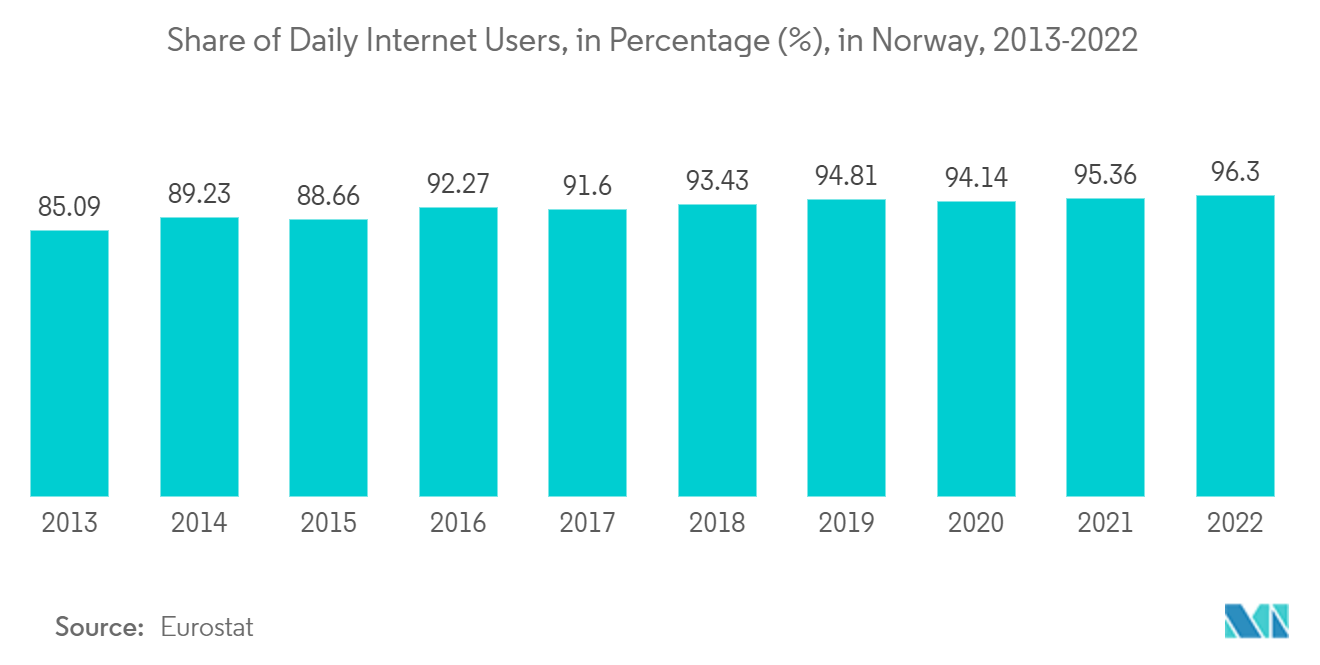Market Trends of Norway Payments Industry
Adoption of Online Mode of Payments Drives the Market Growth
- Online payment and banking have altered how consumers shop, buy, and pay and how businesses operate. Indeed, online payment has revolutionized both e-commerce and banking. With more companies launching online, the Norwegian e-commerce sector is growing rapidly.
- One of the main reasons for Norway's quick acceptance of digital payments is convenience. While cash is a significant transaction and is still used in small-dollar transactions, the convenience and security of using a digital payment method have led to an increase in the number of Norways using digital payments. Norwegians are likely familiar with Vipps AS, Nets A/S, Bank Norwegian, and Klarna Bank AB payment vendors. Debit cards are now one of Norwegians' most popular payment methods, whether in stores or at other points of sale.
- The Buy Now Pay Later (BNPL) segment is another emerging area that has revolutionized how Norwegians pay for things. According to Appmagic, Klarna remained Norway's most downloaded BNPL app in 2021 and 2022, while Tillit continued to grow.
- Consumers can save a digital representation of their debit and credit cards in their smartphone or other devices (such as a smartwatch), which can subsequently be used to make contactless payments at retail and, in certain situations, online. Smartwatches are "on the rise" and could threaten the future use of cash or credit cards.

Digital Wallet Point of Sale Segment Holds Significant Market Share
- Banking institutions in Norway, Denmark, and Finland had decided to combine their mobile payment platforms, joining a wave of consolidation in the quickly expanding payments sector. The three platforms, MobilePay from Danske Bank, Pivo from Finland's OP Financial Group, and Vipps from a group of Norwegian banks led by DNB serve 11 million customers and more than 330,000, including brick-and-mortar stores. The new business hopes to capitalize on the rise of digital payments and demand for digital wallet services at the point of sales to compete with businesses like Nexi, AliPay, ApplePay, and PayPal. These innovation initiatives for brick-and-mortar stores must be carried out in difficult commercial situations. With mobile wallets, however, retailers may improve the payment acceptance process for customers while enjoying lower overall acceptance costs.
- Accepting and processing payments is an essential part of doing business for all shops. However, some payment options pose more practical difficulties than others. Promoting payment card acceptance, however, presents its challenges. The payment networks charge an interchange fee for each card transaction to process debit and credit card transactions and manage the payment rails. Some merchants' attempts to avoid these charges have had a detrimental impact on the consumer experience, whether through card surcharges or higher prices. That is why companies are developing digital wallets for POS transactions.
- For example, to eliminate the need to carry real cards while shopping in-store, Klarna introduced a new Loyalty Card function in the Klarna App that enables customers to store and access all their physical loyalty cards as digital copies. The loyalty card offering integrates into the Klarna App to strengthen an all-in-one experience that drives convenience and value to consumers' shopping and is powered by Klarna's successful acquisition of mobile wallet provider Stocard recently, which has amassed over 48 million users. In 18 areas, including Norway, the Klarna App has lived digital Loyalty Card functionality.
- In May 2022, Google introduced Google Wallet. Users can use Google Pay to do their previous actions (not Tez). When customers are set to board a flight, Google says Google Wallet will alert them of delays and gate changes. They'll get a reminder on their phone before a concert, reminding them of users' saved tickets. Google Wallet will be available in 40 nations, including Norway, where Google Pay is available. When this happens, the service will be immediately replaced.
- The e-commerce platforms are also rocketing their digital ecosystem in the COVID-19 pandemic. The country with unstable geographical terrains is overcoming its weaknesses by bringing out regulations and initiatives for digital payments, improving digital literacy, and growing its mobile and internet penetration. According to Eurostat, The share of daily internet users in Norway will be approximately 96.3 percent in 2022.

